When looking at the vast array of safety razors, you’ll see that they come in varying lengths, weights, grips, and blade gaps, all of which have their purpose and can drastically change your shaving experience.
Today we’ll talk about each of these components of the safety razor handle so you’ll know what to expect when shopping around.
Handle Length
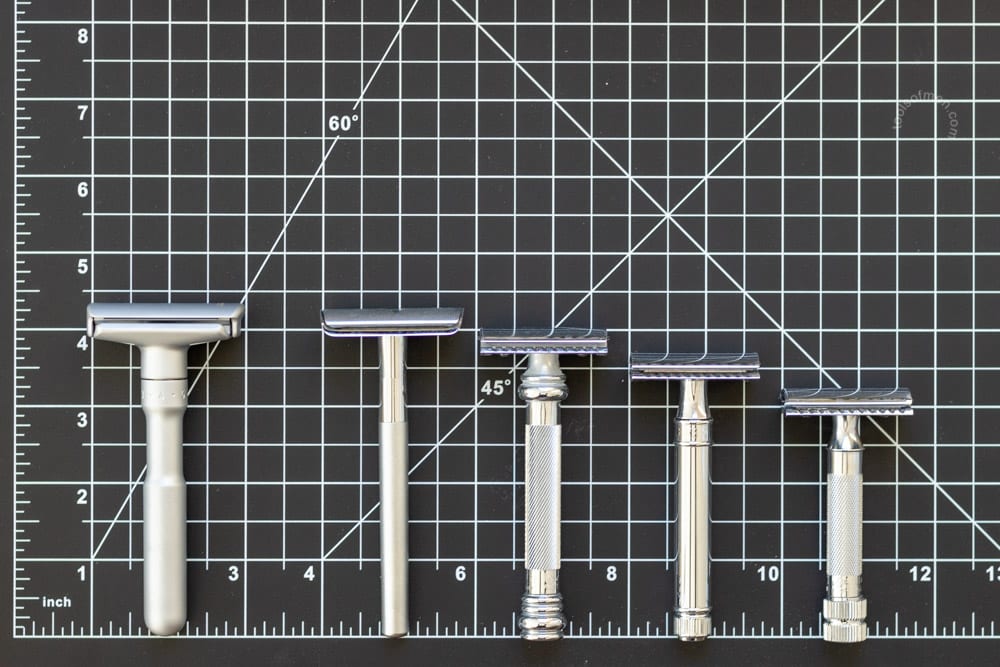
How long or short a safety razor handle is will impact how easy the safety razor is to control. Shorter handles provide better control, especially when precise strokes may be required (i.e., nose, mustache, sideburns, etc.).
Some men prefer a longer handle to the safety razor simply because they have larger hands. The longer length gives more surface area to grip and improves reachability. However, handle lengths are relatively small, with only a range of 1.35″ between the shortest and longest safety razors.
In general, safety razors range from 3.15″ to 4.5″, as you can see in the chart below:
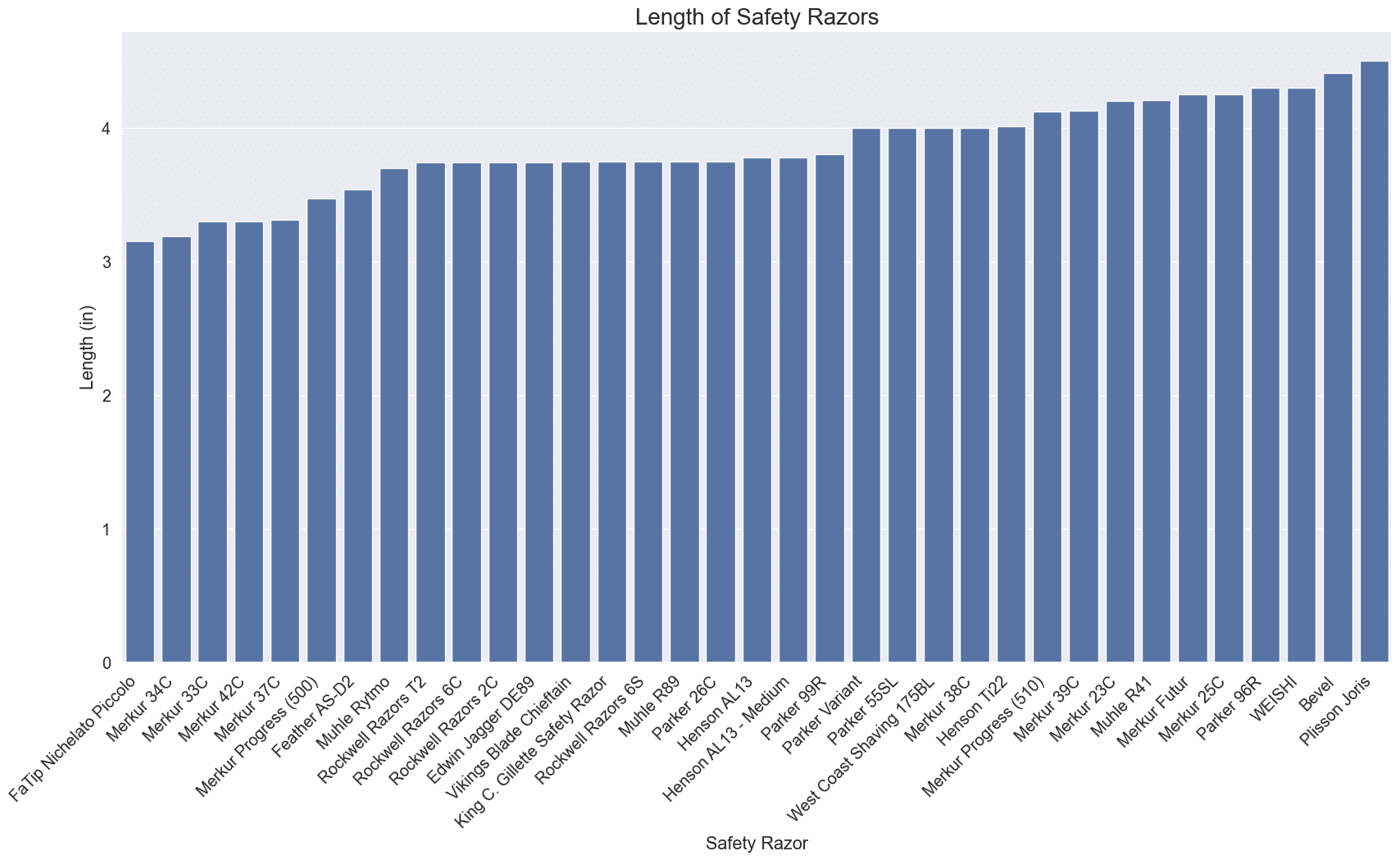
When comparing the length with weight data, there was a slight positive correlation (0.15) between the two values. In other words, shorter handles tended to have a lower weight, while longer-handled razors were slightly heavier.
Grip
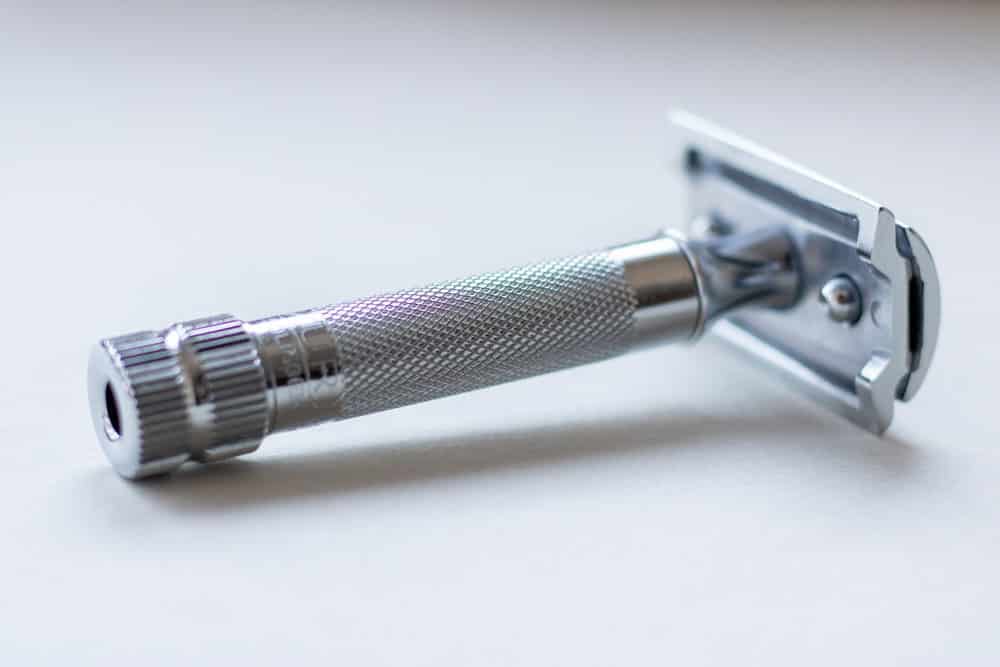
Aside from the overall length of a safety razor, the machining of the handle can drastically change the grip. Some safety razors, like the Merkur Progress, have a series of deep-set grooves, while others, like the Parker Variant and Merkur 34C, have a diamond knurling.
This can affect how your hand feels over the razor and your confidence in your grip. For example, if you prefer to shave in the shower, a smooth body on the Merkur Futur is likely to slip and fall out of your hand, while knurling to the handle makes it significantly easier to get a firm grasp.
Weight
Like length, safety razors run the gamut in terms of weight. Ranging from 1.3 to 6.7 ounces, the weight of a safety razor significantly impacts the shaving experience. The reason is that the razor’s weight alone can slice through facial hair without additional pressure. So in the broadest sense, consider heavier razors for thicker facial hair (and lighter razors for thinner hair) because the weight will be doing most of the work for you.
To give you an idea of the overall weight of a safety razor, we’ve created a chart with all of the information below:
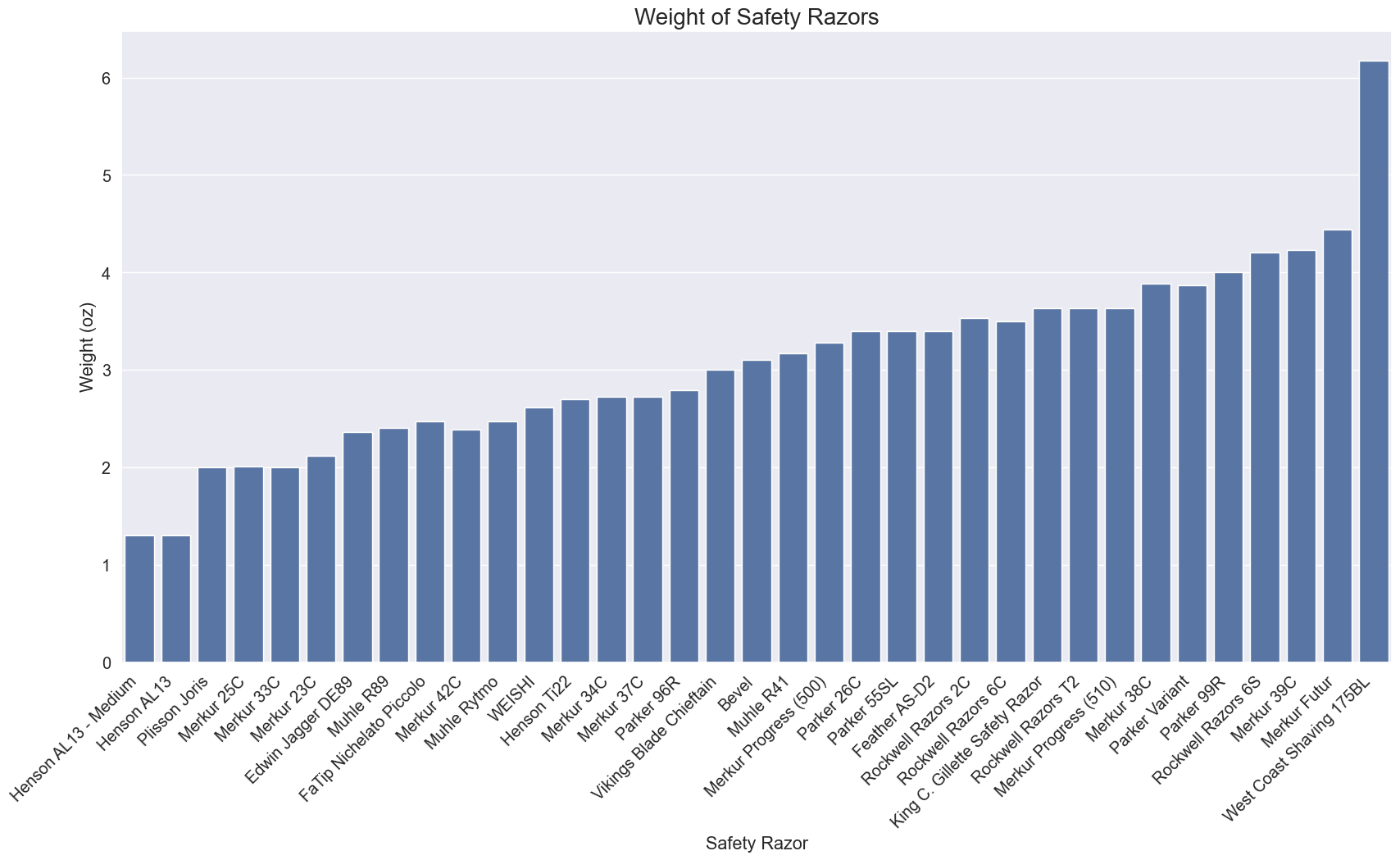
Blade Gaps
The gap between the safety bar and the razor blade is known as, you guessed it, the blade gap. The larger the blade gap, the more exposed the razor blade is to the facial hair and skin. Larger blade gaps result in more aggressive shaves, meaning you can get a closer shave with fewer strokes. Conversely, smaller blade gaps, like the Henson AL13, are milder and provide a gentler shave.
There is a slight downside to large blade gaps. Because the blade is more exposed, there is a greater chance of nicking your skin which can cause razor burn. This can be especially troublesome for those with sensitive skin.
Adjustable Blade Gaps
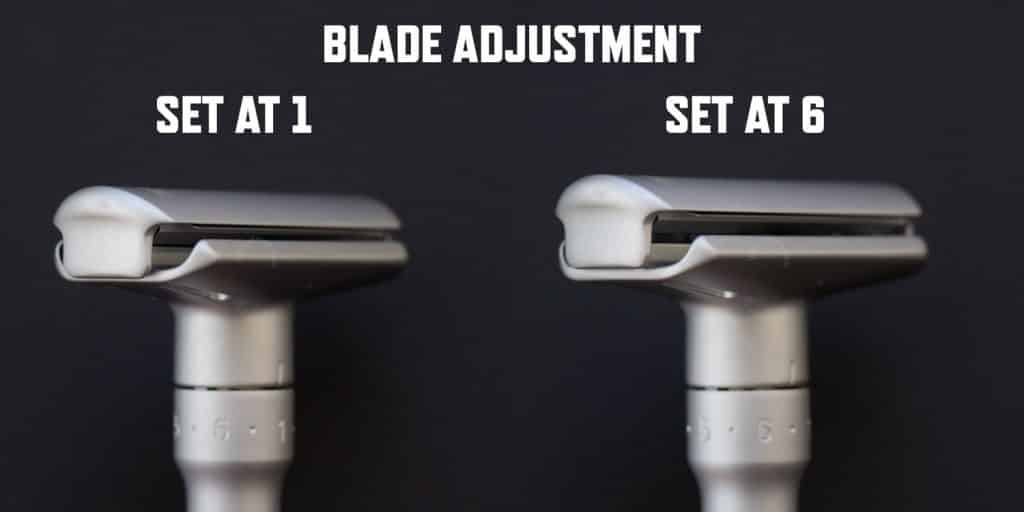
While most safety razors come with a fixed blade gap, a few on the market allow you to adjust the blade gap – these are known simply as adjustable safety razors. By turning a knob (Merkur Futur, Merkur Progress, Parker Variant, etc.) or swapping baseplates (Rockwell 6C), you can increase or decrease the blade gap to suit your skill and tolerance level.
Handle Materials
Like the rest of the safety razor, the handle can be made of various materials. While most safety razors simply depend on a metal composition, some brands, like OneBlade, Supply, Muhle, etc., use various kinds of wood or resin composites. While this may not impact the shave nearly as much, it is more important if you want a razor to last you for decades and not a few years.
Among wet shaving pros, stainless steel and aluminum are the most durable materials.
Other Factors at Play
While the handle is among the most important part of the safety razor, it is not the only thing to consider. Shave technique, grain mapping, and razor blades impact the shave more than anything else. However, the handle becomes far less important once you fully grasp your technique and what works best for your skin and hair.
Of course, this isn’t to downplay shaving cream, soap, and aftershave. However, a good pre-shave routine and a decent post-shave regimen will do wonders for your skin and the quality of your shave.
Frequently Asked Questions
What is the difference between the safety razor handles from one brand?
To take advantage of economies of scale, most safety razor brands base their handles on a few specific designs and swap parts to differentiate between models. For example, the Merkur 39C (Sledgehammer) has an identical handle to that of the Merkur 38C (Barberpole). Furthermore, the 38C has the same close comb and scalloped safety bar found in the 34C, 23C, and 33C. All these models differ in weight, length, and grip.
Is it worth paying extra for a certain handle?
It depends largely on your preference and budget. Some razors are worth the extra investment, especially if they have an adjustable blade gap, as you can fine-tune them to your liking. On the other hand, opting for a stainless steel handle is always recommended if you have the budget, as this will last you for decades instead of a few years.
Can I swap handle parts between models?
Swapping parts largely depends on the brand and if the parts are available to purchase separately. Specialty shave shops (Maggard’s) or some brands (Merkur) allow you to purchase replacement parts. This way, you won’t have to replace your entire razor just because the handle gets damaged. Three-piece safety razors offer more flexibility with parts, as they allow you to mix and match handles, baseplates, and caps.
Conclusion
We hope this guide helped you understand the different aspects of a safety razor handle and how they can impact your shaving experience. If you want to learn more about the nuances, check out our guide to all the different types of safety razors.
Lastly, if you have any questions or comments, please feel free to reach out to us!